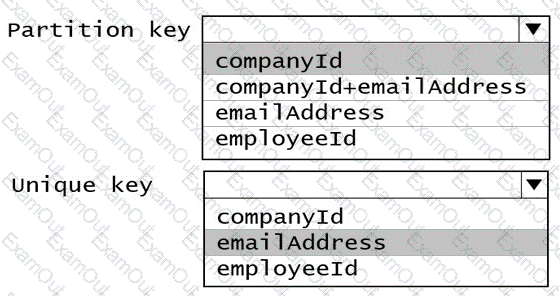You have an Azure Cosmos DB for NoSQL account that contains a database named DB1 and a container named Container1. You need to manage the account by using the Azure Cosmos DB SDK. What should you do?
You have a database in an Azure Cosmos DB Core (SQL) API account.
You plan to create a container that will store employee data for 5,000 small businesses. Each business will have up to 25 employees. Each employee item will have an emailAddress value.
You need to ensure that the emailAddress value for each employee within the same company is unique.
To what should you set the partition key and the unique key? To answer, select the appropriate options in the answer area.
NOTE: Each correct selection is worth one point.
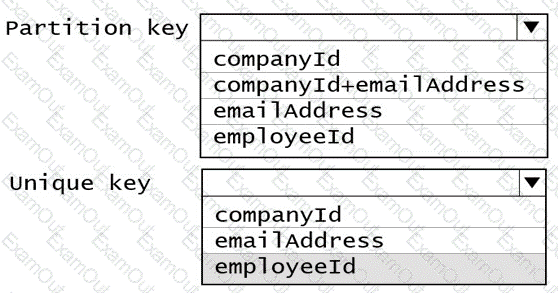
You have the following query.
SELECT * FROM с
WHERE c.sensor = "TEMP1"
AND c.value < 22
AND c.timestamp >= 1619146031231
You need to recommend a composite index strategy that will minimize the request units (RUs) consumed by the query.
What should you recommend?
You have an Azure Cosmos DB for NoSQL account that contains a container named container1.
You plan to use container1 as a key-value store that will perform point reads on the item ID and partition key.
You need to define an indexing policy for container! The solution must meet the following requirements:
• Provide the ability to set DefauitTimeToLive for container1.
• Minimize implementation time.
• Minimize costs.
How should you complete the JSON definition of the indexing policy? To answer, select the appropriate options in the answer area.
NOTE: Each correct selection is worth one point.
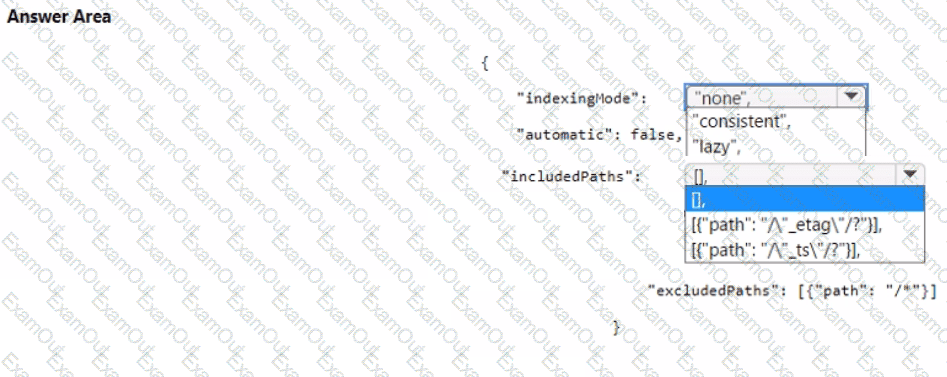
The settings for a container in an Azure Cosmos DB Core (SQL) API account are configured as shown in the following exhibit.
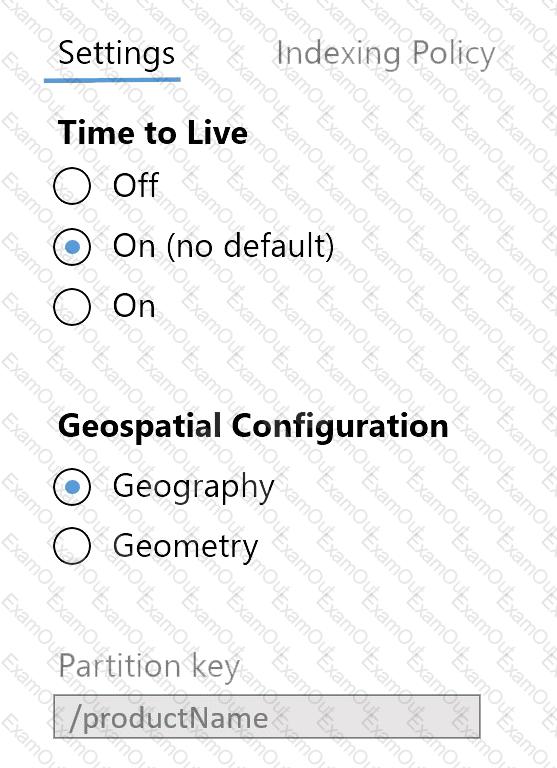
Which statement describes the configuration of the container?
You have an Azure subscription. The subscription contains an Azure Cosmos DB for NoSQL account named account! that hosts a container named Container 1. Container! has a provisioned throughput of 100 request units per second (RU/s) and uses a single physical partition.
Vou are evaluating the available throughput for Container1.
What is the maximum burst capacity that Container1 can accumulate?
You have an Azure subscription that contains the resources shown in the following table.

You need to query Container1 from the serverless SQL pool of workspace1.
How should you complete the query? To answer, select the appropriate options in the answer area.
NOTE: Each correct selection is worth one point.
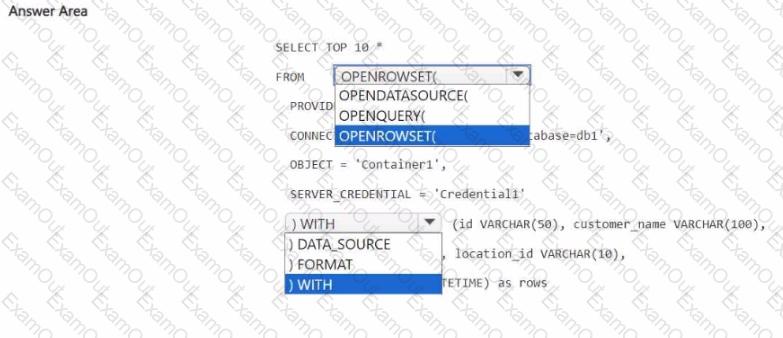
You plan to create an Azure Cosmos DB for NoSQL account that will have a single write region and three read regions. You need to set the consistency level for the account. The solution must meet the following requirements:
• In the write region, writes must replicate synchronously across at least three replicas.
• In the read regions, reads must see writes in order for transactional batches.
• Throughput for reads and writes must be maximized.
Which consistency level should you select?
You need to configure an Apache Kafka instance to ingest data from an Azure Cosmos DB Core (SQL) API account. The data from a container named telemetry must be added to a Kafka topic named iot. The solution must store the data in a compact binary format.
Which three configuration items should you include in the solution? Each correct answer presents part of the solution.
NOTE: Each correct selection is worth one point.
You have a database in an Azure Cosmos DB for NoSQL account that is configured for multi-region writes.
You need to use the Azure Cosmos DB SDK to implement the conflict resolution policy for a container. The solution must ensure that any conflict sent to the conflict feed.
Solution: You set ConfilictResolutionMode to Custom. You Set ResolutionProcedures to a custom stored procedure. You configure the custom stored procedure to use the isTomstone parameter to resolve conflict.
Does this meet the goal?


